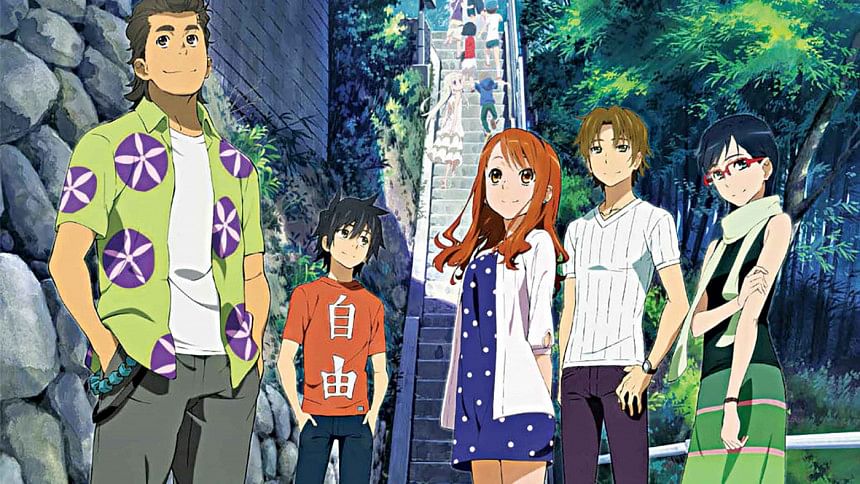Of Heartbreak, Death and Closure

*Disclaimer: This article contains spoilers.
Five minutes into the first episode of Anohana, I was prepared to chuck it.
The protagonist of the anime, Menma, is the perfect prepubescent Moe, who happens to be the love interest of Jinta, a reclusive teenager. Not a good pairing. But I'm glad I stuck around because Anohana just happens to be that rare slice-of-life series which transcends its genre and character tropes.
Anohana: The Flower We Saw That Day is the product of a 2011 collaboration between Tatsuyuki Nagai and screenwriter Mari Okada. It is produced by the animation studio A-1 Picture that also made FairyTail, Sword Art Online, and Kuroshitsuji possible. Set in Japan's city of Chichibu, Anohana builds onto the ambience of the setting and seamlessly weaves spiritual and supernatural elements into its plot. By supernatural elements, I mean Menma herself – or at least the spirit of ten-year old Menma who died back when Jinta and the friends were kids. The anime begins years after this tragedy, when her spirit suddenly appears in Jinta's life, demanding him to help her transcend into the afterlife. Jinta begrudgingly decides to reach out to his childhood friends for help.
As the anime progresses, we see Jinta make an effort with the people in his life, confront his own traumas, and grow into a better person. The only reason I can't call Menma a manic pixie dream girl is because, well… she is dead. However, what truly sets this anime apart, is how it deals with its secondary characters. These characters are Anjou, Tsurumi, Atsumu and my favourite, Poppo. Each starts off as pretty basic one dimensional characters and the only thing that initially stands out is how diverse they were in the way they looked.
Soon enough, the comic scenes become sparse and the pretentiousness of the characters fall through to reveal the guilt that everyone felt at the wake of Menma's death. It's not only Jinta who comes in terms with his grief. It eventually ends up being a collective process for the entire group of estranged people. There are quite a few intense scenes as these characters finally succumb to their sorrow of losing a friend. Anohana is abundant with emotional and nostalgic elements, which can be a little too much for people not used to the genres of slice-of-life, drama, or tragedy. But for an anime that runs for eleven episodes only, the story is well paced and runs smoothly. The animation is simple and clean, complimenting the tone and characters perfectly – even though it has been almost a decade since it was created. The plot, the complex characters and even the animation remains relevant today, and can be pretty cathartic for viewers who have experienced losing a loved one.

 For all latest news, follow The Daily Star's Google News channel.
For all latest news, follow The Daily Star's Google News channel. 



Comments